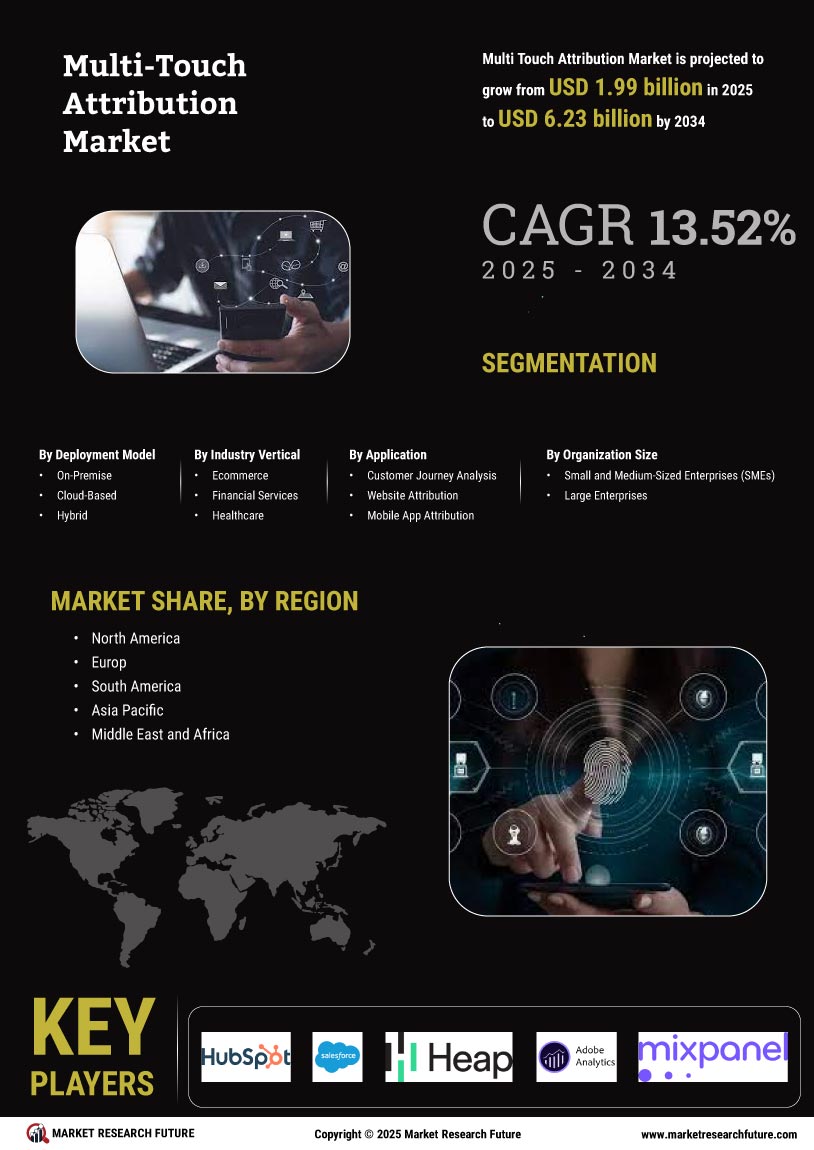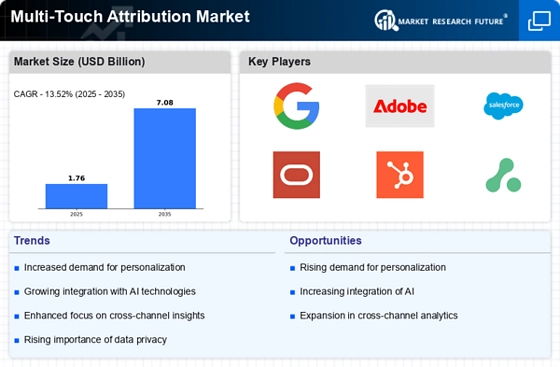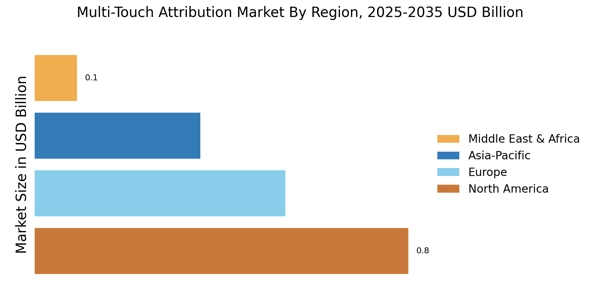Emphasis on Marketing ROI Measurement
In the current landscape, there is a pronounced emphasis on measuring marketing return on investment (ROI), which significantly influences the Multi-Touch Attribution Market. Companies are under pressure to demonstrate the effectiveness of their marketing expenditures, leading to a greater reliance on attribution models that can provide clear insights into performance. As organizations strive to optimize their marketing strategies, the demand for multi-touch attribution solutions is expected to rise. By 2025, it is anticipated that over 70% of marketers will prioritize ROI measurement, thereby driving growth within the Multi-Touch Attribution Market as businesses seek to refine their marketing efforts based on data-driven insights.
Increasing Demand for Data-Driven Marketing
The Multi-Touch Attribution Market is experiencing a surge in demand for data-driven marketing strategies. As businesses increasingly recognize the value of data in shaping marketing decisions, the need for effective attribution models becomes paramount. In 2025, it is estimated that companies will allocate over 60% of their marketing budgets to digital channels, necessitating robust attribution solutions. This shift towards data-centric approaches allows marketers to understand customer journeys more comprehensively, thereby optimizing their campaigns. The Multi-Touch Attribution Market is thus positioned to benefit from this trend, as organizations seek to leverage data analytics to enhance their marketing effectiveness and return on investment.
Growth of E-Commerce and Digital Advertising
The rapid expansion of e-commerce and digital advertising is a key driver for the Multi-Touch Attribution Market. With online retail sales projected to reach approximately 6 trillion dollars by 2025, businesses are increasingly investing in digital marketing strategies to capture consumer attention. This growth necessitates sophisticated attribution models that can accurately track and measure the effectiveness of various marketing channels. As a result, the Multi-Touch Attribution Market is likely to see heightened demand for solutions that provide insights into customer interactions across multiple touchpoints, enabling marketers to allocate resources more effectively and improve overall campaign performance.
Technological Advancements in Analytics Tools
Technological advancements in analytics tools are reshaping the Multi-Touch Attribution Market. The integration of machine learning and artificial intelligence into analytics platforms is enhancing the ability to process vast amounts of data and derive actionable insights. As these technologies evolve, they enable marketers to better understand customer behavior and preferences, leading to more effective attribution strategies. By 2025, it is projected that the market for advanced analytics tools will grow significantly, further propelling the demand for multi-touch attribution solutions. This trend indicates a shift towards more sophisticated and automated approaches in the Multi-Touch Attribution Market, allowing businesses to stay competitive in an increasingly complex digital landscape.
Regulatory Compliance and Data Privacy Concerns
Regulatory compliance and data privacy concerns are becoming increasingly relevant in the Multi-Touch Attribution Market. As governments implement stricter data protection regulations, businesses must adapt their marketing strategies to ensure compliance while still effectively measuring attribution. This evolving landscape presents both challenges and opportunities for the industry. Companies are likely to invest in solutions that not only provide accurate attribution but also adhere to privacy regulations. By 2025, it is expected that the demand for compliant multi-touch attribution solutions will rise, as organizations seek to balance effective marketing with the need for data privacy, thereby shaping the future of the Multi-Touch Attribution Market.


















Leave a Comment